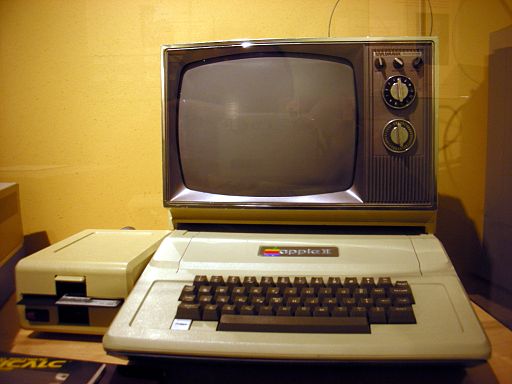It is difficult to imagine life without computers even though the history of computers is actually quite short. Computers have become so ingrained in modern day society that it is hard to believe that personal computers (as mass-market consumer devices) were only invented in 1977.
The following attempts to briefly summarise the fascinating history of computers. It includes the timeline of key inventions that contributed to the development of modern day computers.
Numbers & Stars
For most of human history, humankind’s need for the manipulation of numbers has far exceeded the ability to do so efficiently. The humble abacus was one of the earliest machines developed to help people with calculations. It is thought that the abacus was invented in Babylon around 2400 BC and is still in use today.
Preceding the industrial revolution, Scotsman John Napier, amongst others, made great steps forward in complex calculation techniques. Paving the way for mathematics professor Charles Babbage to develop his difference engine and analytical engine. These inventions are considered essential in laying the foundation of “formal” computing and computer science.
History of Computers – The Generations of Computer Development
Many of the advances that have led to the modern day computers have taken place since the 1940s. This history of computers is often categorised into five generations. Each generation represents a major technological development that influenced the industry.
First Generation 1940 -1956
The first generation of computers were based on vaccuum tubes. These tubes were developed by two University professors Mauchly and Eckert. Computers were enormous and could take up an entire room. They were also expensive to run, generated a lot of heat and malfunctions were common. Examples of first generation computers include the UNIVAC and ENIAC computers. In fact, the UNIVAC was the first commercial computer delivered to a business client, being the U.S Census Bureau in 1951.
Second Generation 1957 – 1963
The second generation is characterised by the use of transistors replacing vacuum tubes. Scientists at Bell laboratories developed the transistor in 1947 although it did not become popular until the late 1950s. Transistors performed the same function as vacuum tubes but were much smaller, drawing less power and generating less heat. The era of miniaturisation also began. This was due to the smaller size of transistors. However computers were still quite sizable and only larger businesses could afford them to carry out purposes such as accounting and payroll.
Third Generation 1964 – 1971
The third generation in the history of computers represents the introduction of integrated circuits: silicon chips containing multiple transistors. The small size of the integrated circuit enabled computers to become smaller, faster, more reliable and cheaper. Computers using these integrated circuits quickly replaced transistor-based machines. This allowed them to become more accessible to a wider audience. For the first time, keyboards and monitors were introduced. These replaced punch cards and printouts.
Fourth Generation 1972 – Present
The invention of the microprocessor had a significant impact on the computer development industry and brought about what is referred to as the fourth generation. Containing thousands of integrated circuits within a microprocessor, this technology greatly improved the processing speed and power. It also further reduced the size of computers.
By the late 70’s and early 80’s, processor technology had advanced to the point where companies such as Apple, Commodore and IBM manufactured microcomputers built for home use. The physical design and operating systems in these early microcomputers was the early blueprint of how we today recognise these amazing machines.
IBM introduced its first computer for home use in 1981. Cheaper clones soon appeared in the marketplace such as Compaq and Dell. Apple introduced the Macintosh in 1984.

Computer technology has also evolved outside the realm of desktop computers to mobile devices. These mobile devices include laptops, iPads, tablets, mobile phones, watches, etc. The advent of the internet also assisted in integrating more devices in society.
Fifth Generation (Future)
Scientists are working hard on developing the next generation of computing. Future computing is to be based on features such as artificial intelligence, expert systems and natural language. The goal is to create machines capable of performing tasks in a similar way to humans. Developers are also continuously exploring ways to further increase processing power.
Affordable Computer Repairs in Brisbane
If history is any indication of the future, there is no doubt that computers and mobile computing devices will continue to play an important role in our society. As a computer repair business in Brisbane it is essential that we stay abreast of this evolving and exciting industry.